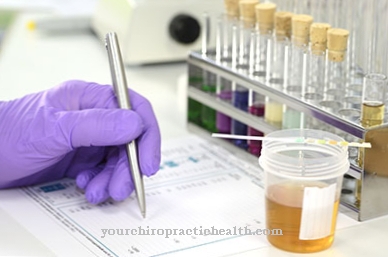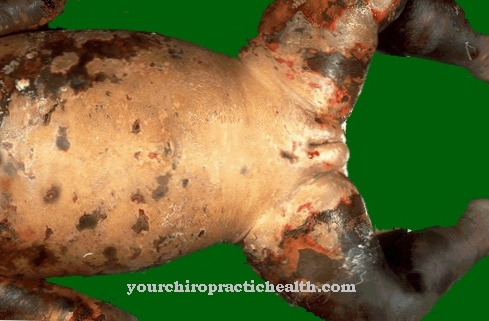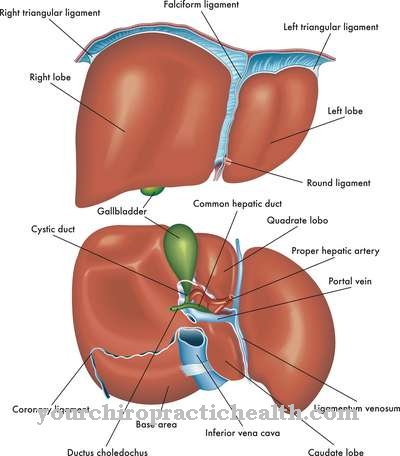More and more people are choosing soy-containing products. But not everyone can tolerate the legume; a Soy allergy is not uncommon these days, and in many cases it is a cross-allergy. This means that the allergy sufferer will also react to other legumes.
What is a soy allergy?

© Chalermpon - stock.adobe.com
If allergic symptoms occur after consuming soy or products containing soy, the doctor speaks of a soy allergy. A Soy allergy in many cases represents a cross allergy; This means that overreactions also occur if the allergy sufferer also eats other legumes, such as peanuts or peas. For this reason, doctors also speak of a cross allergy.
causes
In principle, there are two ways why a soy allergy can occur, so that the medical professional must differentiate between a secondary and primary soy allergy: If it is a primary allergy, the person allergic to soy is allergic to it; If there is a secondary allergy, there is a pollen-associated allergy.
Those affected therefore react allergically to the pollen of a hazelnut, an alder or a birch. Since soy contains a similar protein, the body can also react to it, so that the body's own immune defense cells are activated. With this form there is no classic soy allergy.
Symptoms, ailments & signs
Those affected complain of a tingling lip, a tingling oral mucosa or a tingling tongue, which can subsequently lead to numbness, swollen oral mucosa, itching and shortness of breath.
The symptoms are diverse - there are therefore no typical or classic symptoms that subsequently suggest a soy allergy. Many sufferers suffer - after just a few minutes - from an oral allergy syndrome. This means that the tongue, lips and also the oral mucosa tingle or sometimes become “numb”. In many cases, the mucous membranes can also swell, so that the person concerned suffers from shortness of breath.
Anaphylactic shock can then occur, sometimes causing cardiac arrest. There is therefore an acute danger to life! In addition, allergic reactions can also appear on the hand.
Those affected suffer from redness or itching, which can also lead to extensive hives. If the person is already suffering from neurodermatitis, the symptoms can become even more pronounced. Sometimes those affected also complain of nausea, vomiting or severe diarrhea.
Diagnosis & course of disease
The primary allergy can be identified relatively easily. Here the doctor uses the results of the prick test. The doctor divides the forearm into different sections, which he marks with numbers and then tests different allergens. So if there is a soy allergy, allergic reactions will only develop in the treated area, provided that the solution mixes with the blood.
Another way of diagnosing a soy allergy is to do a blood test. The doctor takes the specific IgE antibodies that the body has already formed against soy. However, it becomes more problematic if there is a secondary soy allergy. The secondary allergy is possible if the person affected is already allergic to alder, birch or hazelnut.
The allergy sufferer first has to follow a special exclusion diet, whereby he is then confronted with a large number of various allergens; if allergic reactions occur - triggered by soy - it is clear that a secondary soy allergy is present. It can sometimes take weeks for the doctor to come to the result.
Complications
The complications that must be expected with a soy allergy do not differ fundamentally from those of other food intolerances. Usually a soy allergy presents with mild to moderate symptoms. After consuming soy-containing foods, those affected complain of symptoms such as tingling lips, swollen oral mucosa or itching of the tongue and throat problems, especially pain when swallowing.
Occasionally there is also a slight shortness of breath. If the course is severe, there may be other side effects. In some patients, allergic reactions also appear on the hands. The patients often suffer from reddened skin and severe itching, and in rare cases extensive hives occur.
The most serious complication to be expected is anaphylactic shock, which can lead to cardiac arrest. In this case there is an acute risk of death for the patient. Further complications can arise with minor surgical interventions.
For sedation in endoscopy, for example, the active ingredient propofol is very often used, which can cause a reduced oxygen content in the blood and a drop in blood pressure. Patients who suffer from a nut allergy are often sensitive to this active ingredient. It must not be used at all for soy allergy sufferers.
Since many products now contain soy, the patient's lifestyle can be complicated. Those affected can no longer consume most of the ready-made meals on offer, as well as most sports or protein products. Eating in large kitchens is often almost impossible.
When should you go to the doctor?
If symptoms occur after consuming soy products that suggest an intolerance or a real allergy to soy beans, a visit to the doctor should not be delayed. It can be an isolated occurrence or a cross allergy that is related to a pollen allergy. In this case, the soy allergy would be more dangerous.
The presence of soy in processed foods is problematic. It is not only vegan people who consume soy in large quantities. Many people who eat normally do not even know which products from their daily consumption contain soy components. In the case of an allergy, however, this awareness is essential. Proteins contained in soy are responsible for allergic symptoms.
The primary soy allergy affects infants who are allergic to cow's milk. It therefore requires an immediate doctor's visit and a switch to almond or oat milk. The allergic reactions can later evaporate again because the intestinal system is mature. The secondary soy allergy is associated with pollen. The large number of cross-reactions here is the reason why the doctor should be consulted.
Inhaled soy allergy mostly affects workers who deal with bulk goods containing soy. Here the soy allergy can even lead to occupational disability. It makes sense to see a doctor as soon as possible, because ignored symptoms such as swollen airways, hives or shortness of breath can be dangerous.
Treatment & Therapy
First and foremost, the therapy deals with the fact that foods containing soy must be avoided. This is especially difficult at the beginning: soy components can be found in many foods, so that those affected have to pay attention to which products they are still allowed to consume and which are not.
If there is a soy allergy, numerous foods have to be removed from the menu. These include soy flour, soy beans, soy sauces, soy seedlings or various other soy products that are primarily intended to replace dairy products such as soy yoghurt, soy milk, soy ice cream or soy cream. Soy is also found in many chocolates (lecithin); as well as in products that contain the additives E 426 and E 322.
These should be avoided if possible - behind these key figures there are also soy components that can trigger an allergic reaction. There is no cure or various other treatments for the sufferer to consume the soy products. However, studies have found that strict diets can help.
Those affected who have taken care not to consume soy products have been able to consume small amounts of soy again over time. However, it is advisable if the allergy sufferers are careful not to consume any soy ingredients at all. In this way, any allergic reactions that can sometimes be life-threatening can also be prevented.
prevention
Prevention must begin in childhood. The human immune system develops in childhood; During this time, the immune defense is strengthened and subsequently expanded. According to various studies, long breastfeeding should help the child to become "immune" to allergens.
In addition, there should be no excessive intake of soy; if too much soy is consumed, the body can - at some point - activate its immune system against the product, leading to a soy allergy. Other measures that can prevent a soy allergy are sometimes not known.
Food allergies mainly affect the person's diet if there were no intolerances beforehand. That is why the family doctor guides him through the follow-up care in changing his diet.
Aftercare
The allergy sufferer can contact the doctor with questions about a soy-free diet. Alternatively, a nutritionist or allergist will advise him. The extent to which the allergy affects the patient depends on their previous eating habits. Anyone who has often consumed soy products and suffers from an intolerance should avoid these foods in the future.
With the help of substitute products, this transition can be made easier. An allergy sufferer who has not previously drunk soy milk or cooked with tofu must be aware of the possibility of cross-contamination. Foods that are not made from soy can also contain soy residues.
Particular caution is required when visiting restaurants, because in this case the patient cannot control the processes in the kitchen. Traces of allergens in other dishes cannot be excluded here. The doctor will prescribe emergency medication for those affected if they accidentally ingested soy. Anaphylactic shock can be avoided with the drug.
You can do that yourself
If a soy allergy is diagnosed, it must be ensured in everyday life that there is no contact with the legume. Food must be checked for its ingredients. The package insert should be read carefully when purchasing products. Even with minimal amounts of soy in a product, it should not be consumed.
Particularly when eating meals that are not prepared yourself, greater vigilance must prevail before consumption. A meal in a restaurant or at a friend's house should always be linked to the demand for the ingredients used. The cook should be informed about the allergic reaction so that he can take this into account when preparing the meal. The person concerned should make sure that he asks directly whether products containing soy have been used. This is necessary to avoid misunderstandings in everyday life.In addition, the use of well-known foods that have been refined with soy should also be questioned.
If the person concerned first notices allergic reactions, the food supply must be stopped immediately. Cross allergies occur in a large number of those affected. For this reason, an allergy test must be carried out early on to find out whether there are any other allergic reactions. In order to avoid a loss of quality of life, one should switch to alternative preparations.

.jpg)

























